Bolognese Sauce
This post may contain affiliate links. Read my full disclosure policy.
Simmer your way to a rich and savory Bolognese sauce. Teeming with fresh veggies, succulent meat, and robust flavors, this Italian classic is perfect for cozy family meals.
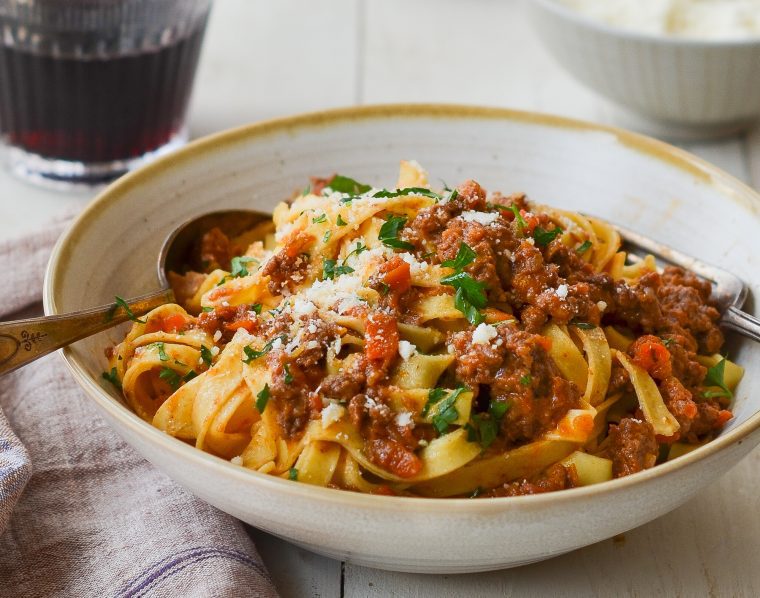
Bolognese, or ragù alla bolognese, is a slow-cooked Italian meat sauce that hails from Bologna. It’s a Sunday night staple in my household, perfect for those big family suppers. As it simmers on the stove and its incredible aroma fills the house, it’s only a matter of time before everyone starts asking, “When’s dinner?”
Unlike standard meat sauces, which heavily rely on tomatoes, Bolognese sauce achieves its depth of flavor and richness through the addition of pancetta, lots of veggies, broth, wine, and a touch of milk. While bolognese is typically served over pasta like tagliatelle or fettuccine, it’s equally delicious layered into a lasagna. For an extra special touch, consider picking up some fresh pasta from the refrigerated section of your supermarket—it’s an easy way to take this dish up a notch.
Table of Contents
“My whole family loves this sauce. It’s rich and full of flavor and so easy for weekday or weekend.”
What You’ll Need To Make Bolognese Sauce
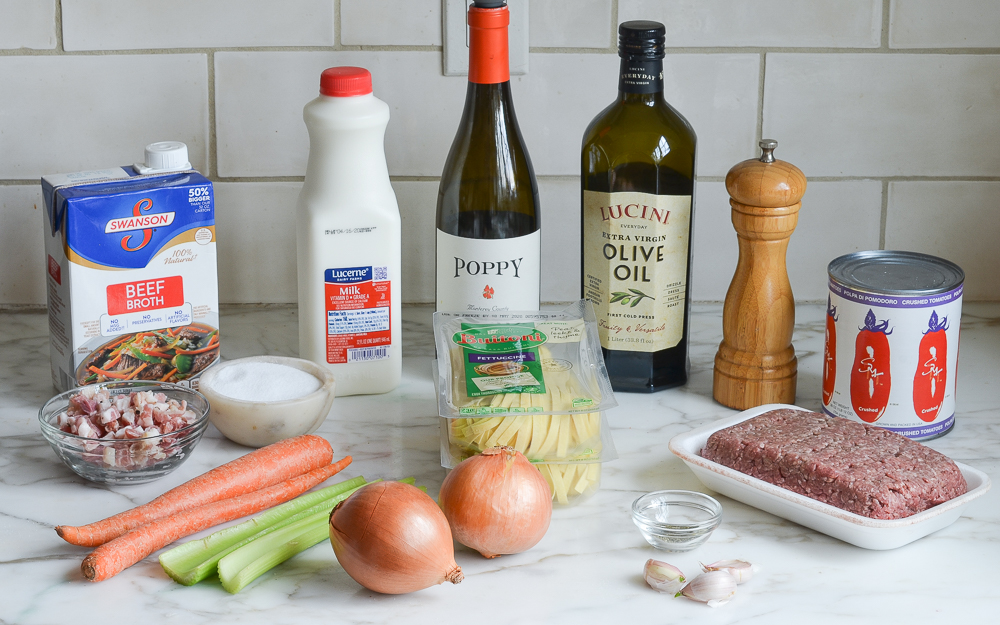
- Onions, Carrots, Celery, Garlic: These aromatic vegetables form the flavor base of the sauce, providing depth and sweetness.
- Ground Beef: Serves as the main protein component, adding richness and texture to the sauce.
- Pancetta: Enhances the meaty flavor of the sauce with its salty and savory profile. It’s essentially Italian bacon, cured with salt and spices, and then dried (unlike American bacon, which is smoked). You can find it in the deli section of most supermarkets or conveniently pre-cut and packaged in the refrigerated gourmet foods aisle, which is a great time saver.
- Red Wine: Adds acidity and complexity to the sauce. See the FAQs below for my recommendations on the best wine to use.
- Beef Broth: Provides additional meaty flavor and richness, while also adding moisture.
- Canned Crushed Tomatoes: Forms the tomato base of the sauce, contributing sweetness and tanginess; it also thickens the sauce.
- Whole Milk: Balances the acidity of the tomatoes and wine, adding creaminess and richness.
- Pasta: Serves as the base for serving the Bolognese sauce. Fresh pasta from the refrigerated case in the supermarket is especially delicious—and it cooks faster than dried pasta.
- Oregano and Basil: Herbs that add aromatic freshness to the sauce.
- Jump to the printable recipe for precise measurements
Step-by-Step Instructions
To make things easier, I use a food processor to finely chop the vegetables. If you don’t have one, chopping by hand works too. If using your food processor, place the onions in the bowl fitted with metal blade.
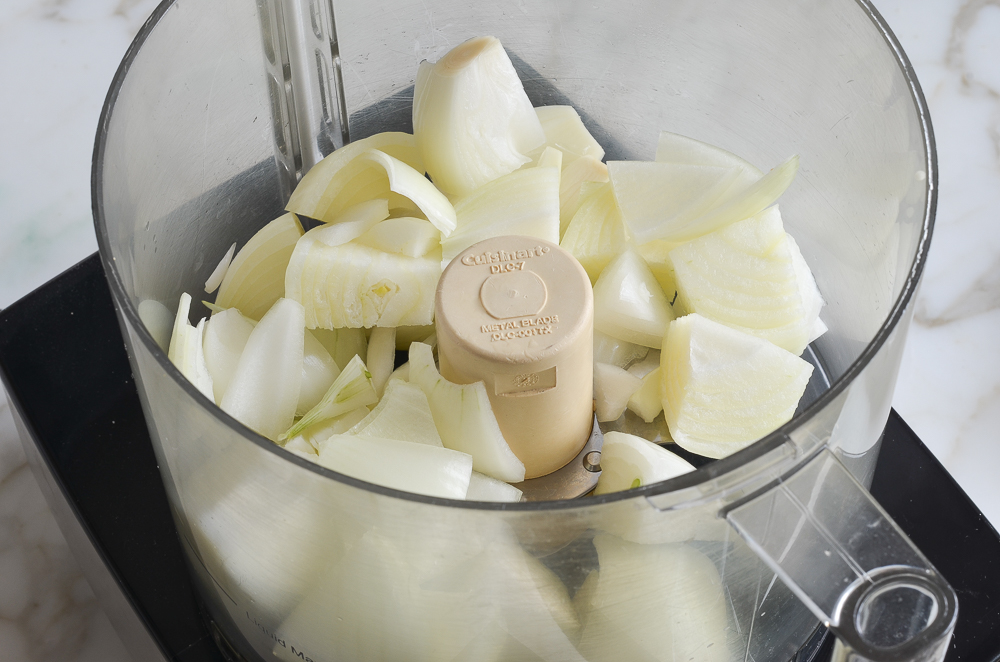
Pulse until very finely chopped but not puréed.
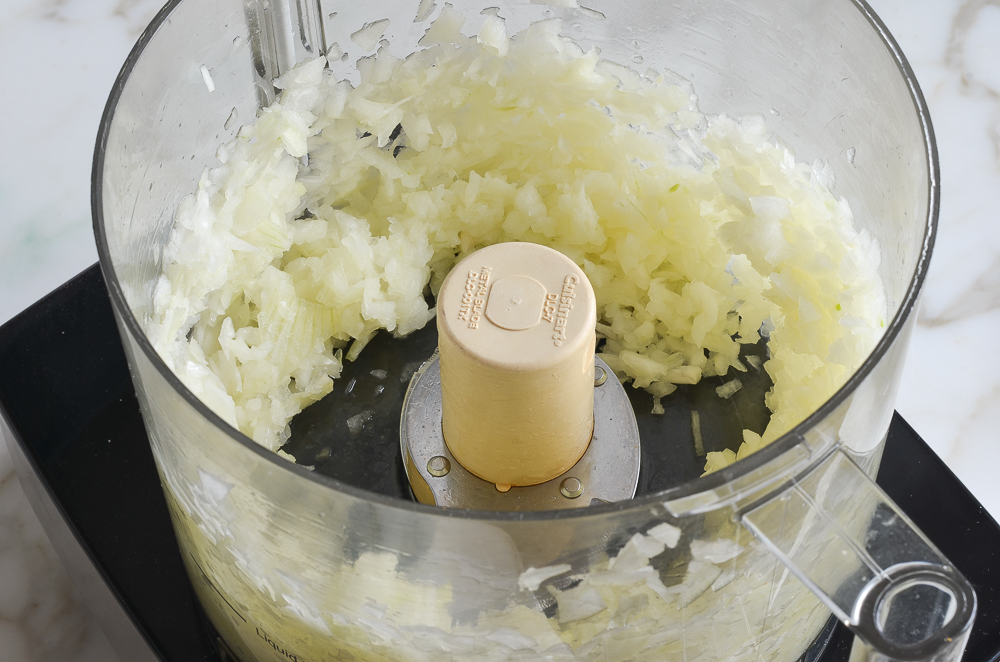
Transfer the onions to a bowl, then add carrots and celery to the food processor.
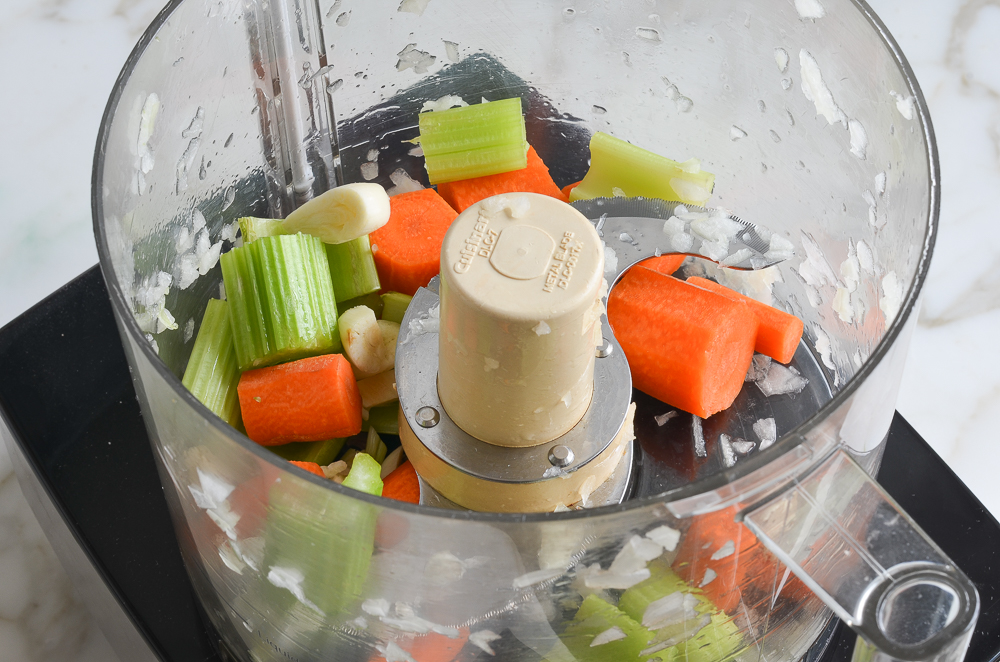
Pulse until finely chopped.
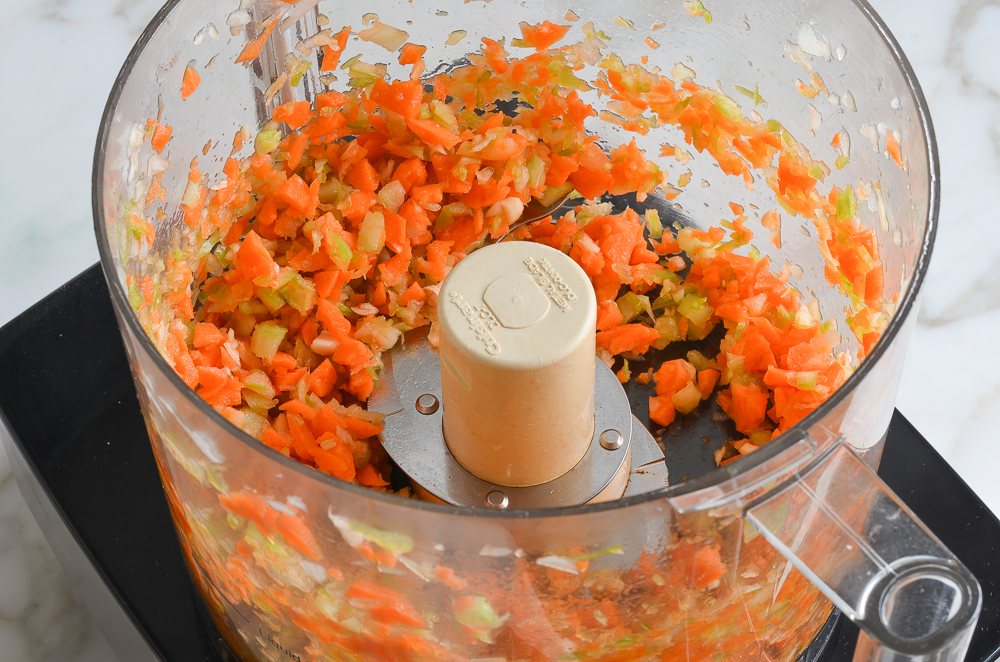
Heat the olive oil in large heavy pot over medium-high heat, and add the onion and vegetable mixture.
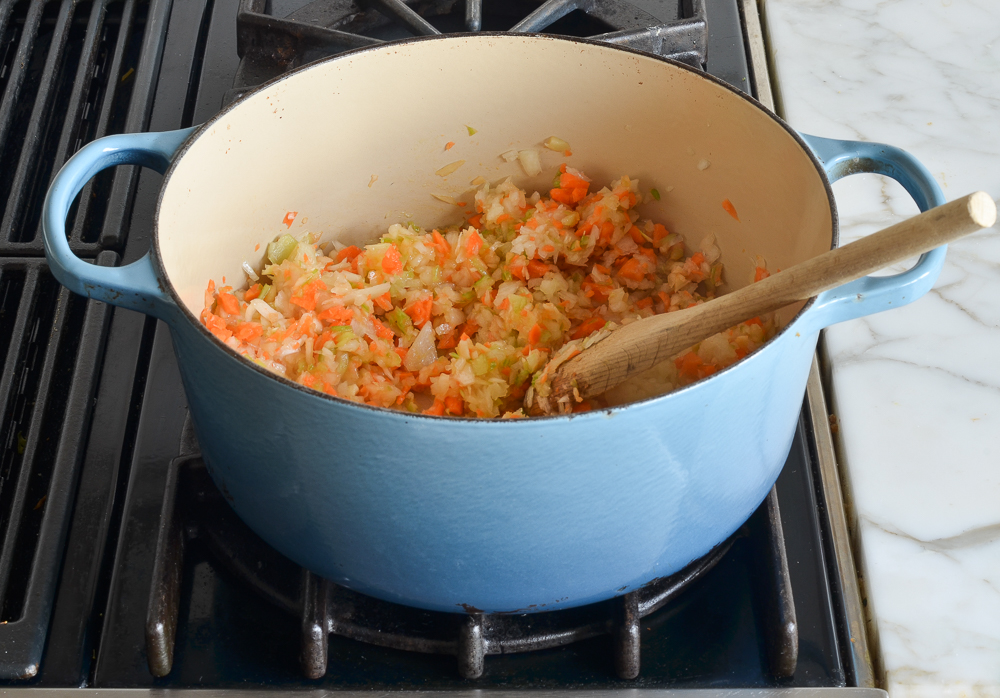
Cook, stirring frequently, until soft, about 8 minutes. Lower the heat if vegetables start to brown.
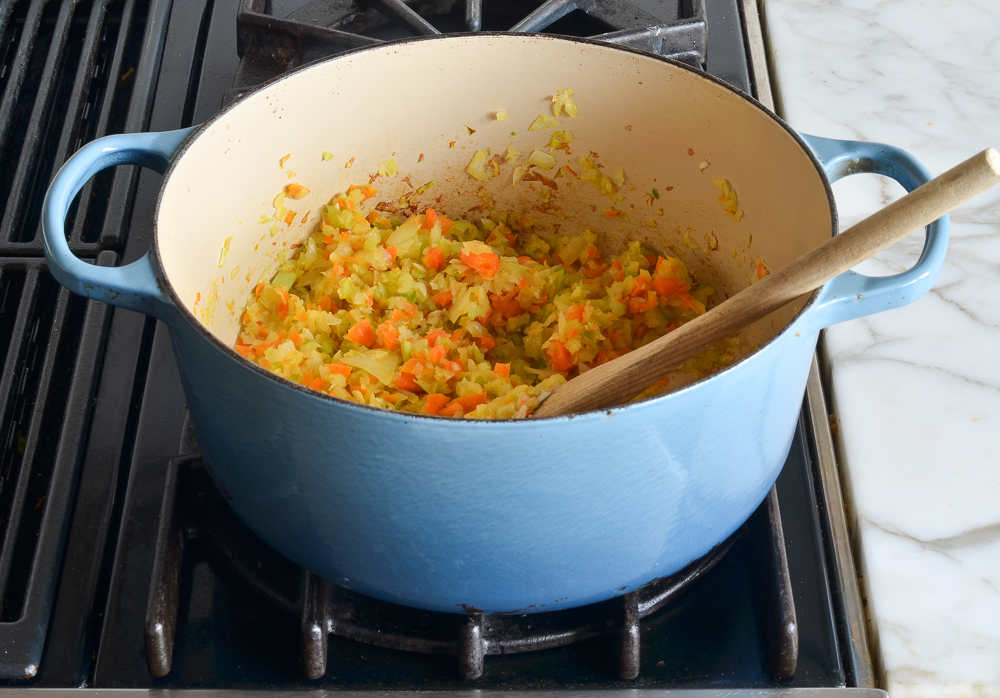
Add the ground beef, pancetta, salt and pepper.
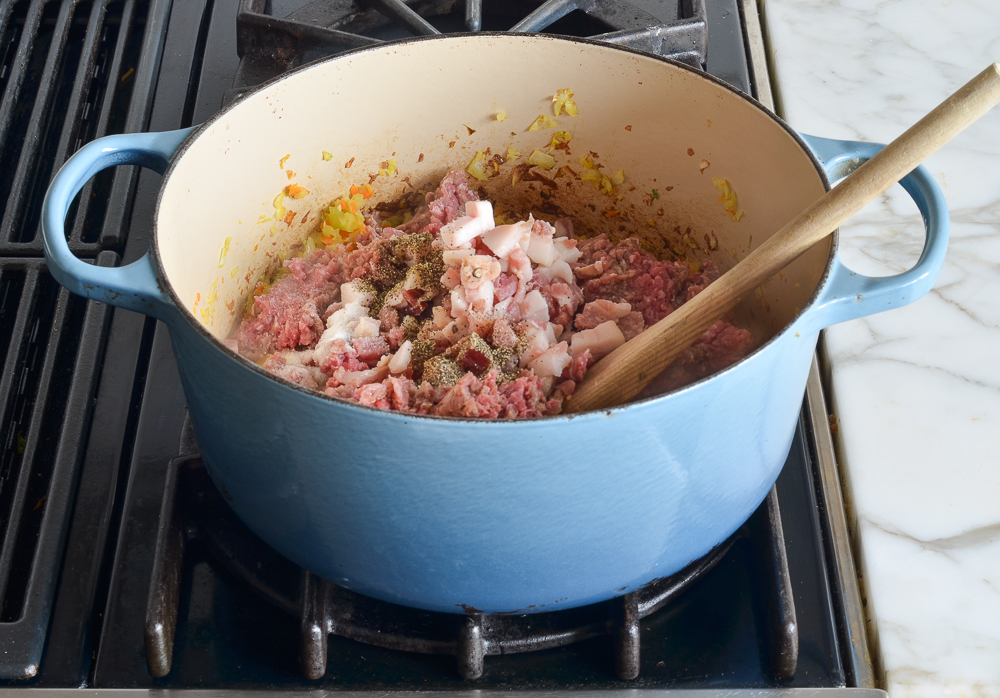
Cook over medium-high heat, breaking up meat with a wooden spoon, until meat is no longer pink, 5 to 10 minutes.
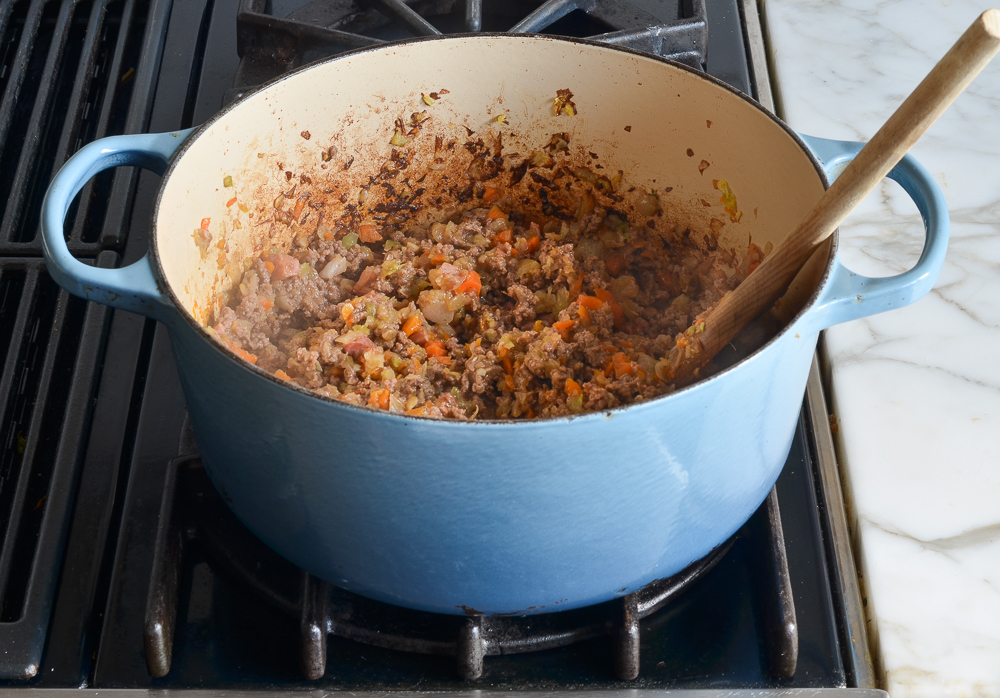
Add red wine and cook until liquid is almost evaporated, 1 to 2 minutes.
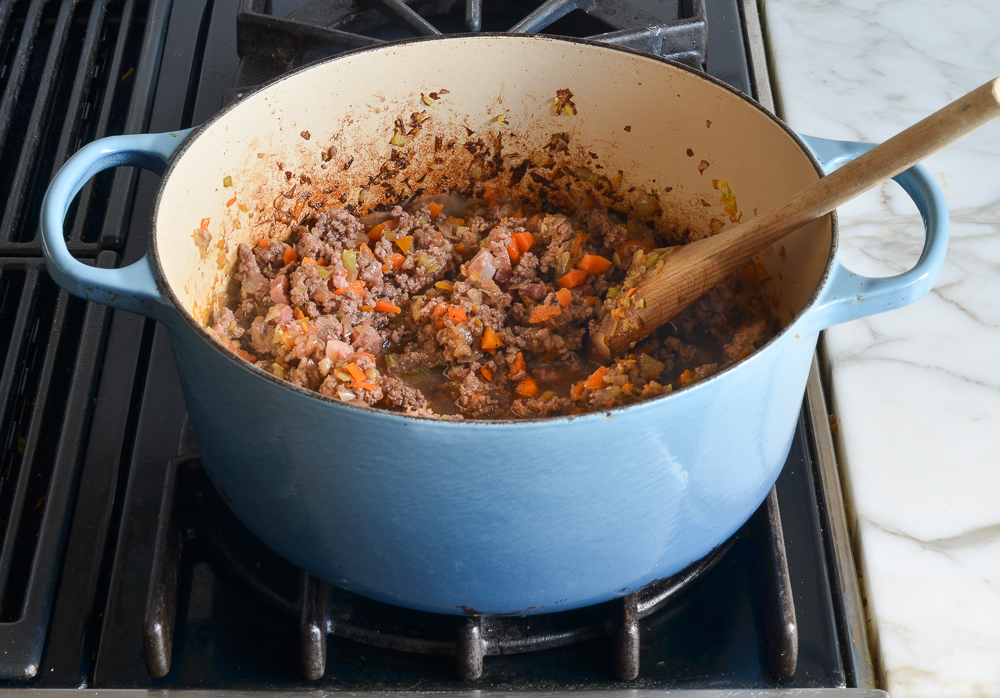
Add the broth, crushed tomatoes and oregano.
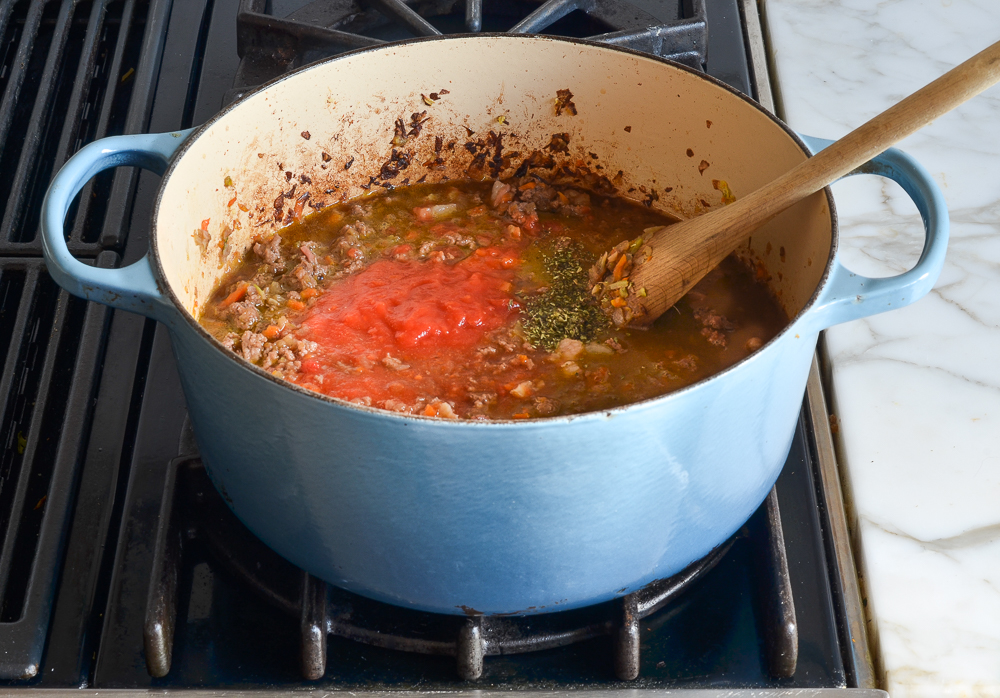
Bring to a gentle boil, then reduce heat to low. Cover with the lid slightly ajar and simmer for 1 hour and 30 minutes.
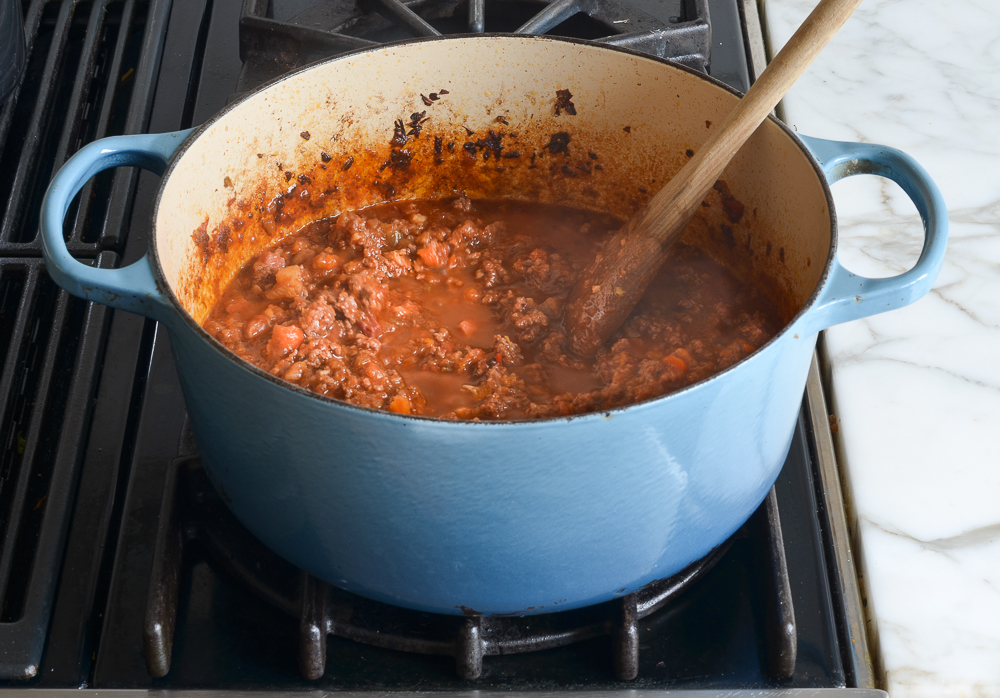
Stir in the milk.
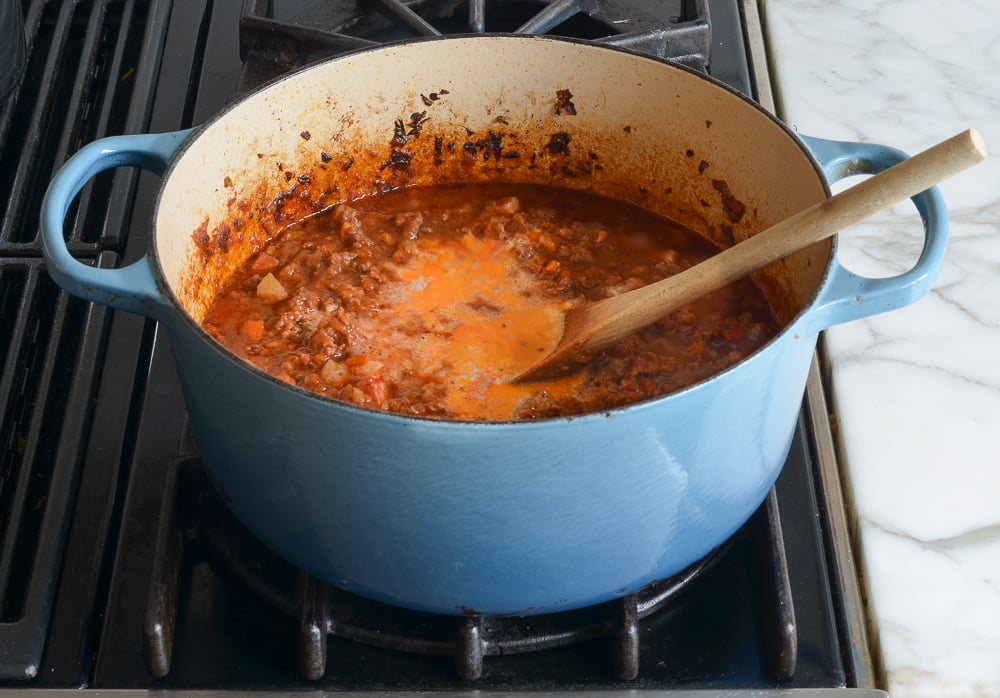
Cover with the lid slightly ajar and simmer until milk is absorbed, about 35 minutes. If the sauce looks greasy, use a soup spoon to skim the fat off of the top. Cover to keep warm while you make the pasta.
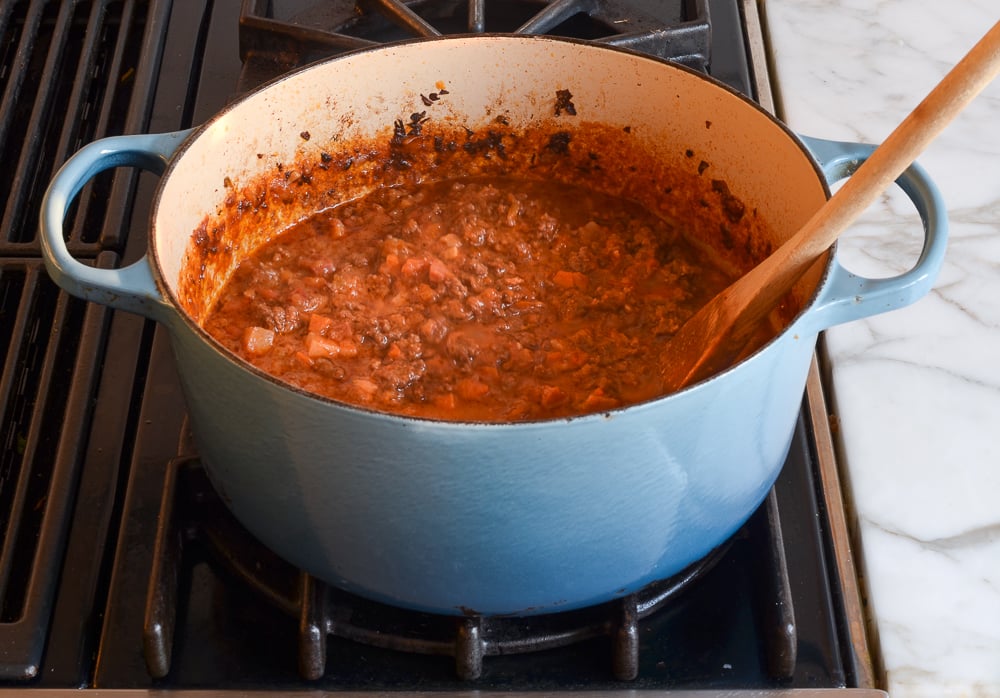
Cook pasta according to package instructions.
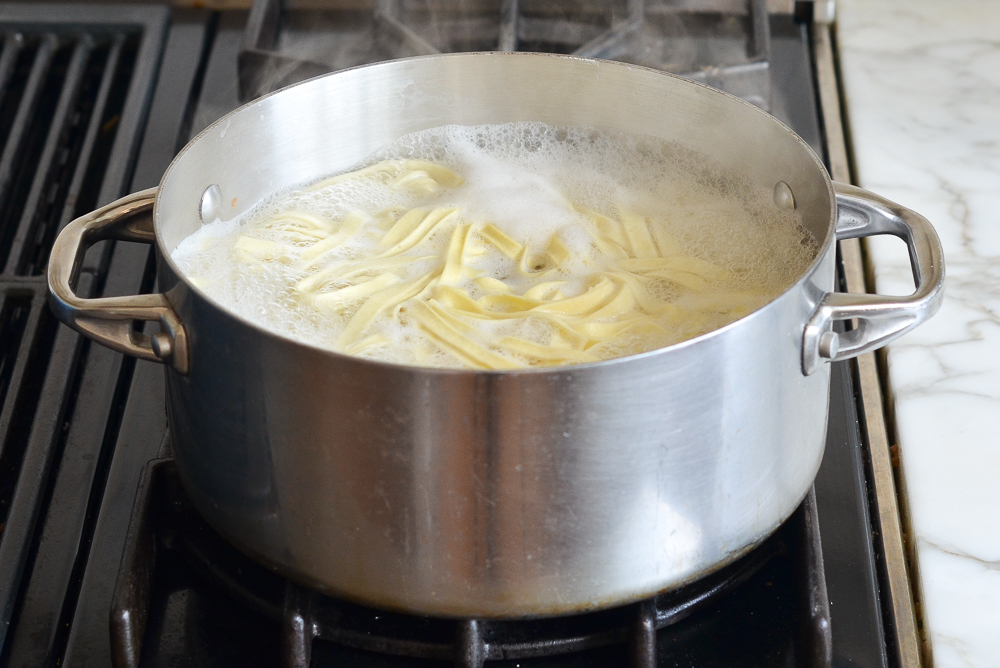
Drain, reserving 1 cup of the pasta water. Toss the pasta with the sauce, adding the reserved pasta water little by little if the pasta seems dry. Taste and adjust seasoning with salt and pepper if necessary. Divide the pasta into serving bowls and sprinkle with fresh herbs, if using. Pass the grated Parmigiano Reggiano at the table.
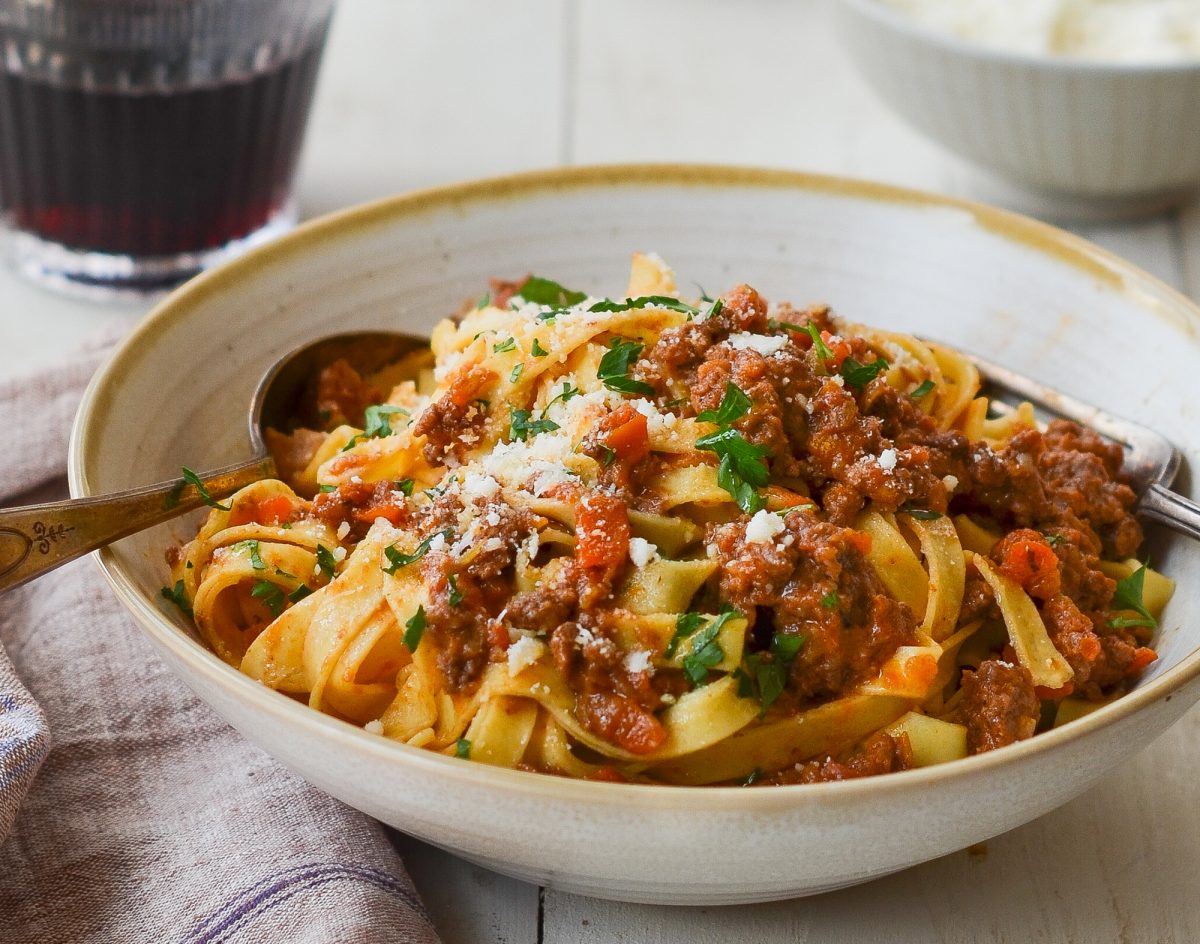
Frequently Asked Questions
Yes, Bolognese sauce can be made up to 3 days ahead of time. Let it cool to room temperature and store in a covered container in the refrigerator. Reheat over medium-low heat on the stovetop before serving.
Yes, Bolognese sauce freezes exceptionally well. Allow the sauce to cool completely before transferring it to airtight containers or freezer bags. Store in the freezer for up to 3 months. When ready to serve, thaw the sauce in the refrigerator overnight and reheat gently on the stove, adding a little water or broth if necessary to adjust the consistency.
A dry red wine is ideal for Bolognese sauce. Traditional choices include Italian varieties such as Chianti, Barolo, or Sangiovese; these wines not only enhance the sauce but also complement the finished dish when served alongside it. However, any good-quality dry red wine you enjoy, such as Pinot Noir, Merlot, or Cabernet Sauvignon, can also be used. Just avoid using cooking wine, as it contains salt and additives that can affect the flavor of your sauce.
The classic pasta choice is tagliatelle, a wide, flat egg noodle that holds the sauce well. Other traditional options include pappardelle and fettuccine, but any pasta shape will work!
You May Also Like
Bolognese Sauce
Simmer your way to a rich and savory Bolognese sauce. Teeming with fresh veggies, succulent meat, and robust flavors, this Italian classic is perfect for cozy family meals.
Ingredients
- 2 medium yellow onions, peeled and chopped into 1-inch chunks
- 2 carrots, peeled and chopped into 1-inch chunks
- 2 celery stalks, cut into 1-inch chunks
- 3 cloves garlic, very roughly chopped
- 2 tablespoons extra-virgin olive oil
- 1⅓ pounds ground beef (85% lean)
- 4 ounces pancetta, finely diced
- 1 teaspoon salt (plus more for pasta water)
- ½ teaspoon freshly ground black pepper
- ½ cup dry red wine
- 2 cups beef broth
- 1 (14-oz) can crushed tomatoes (about 1¾ cups)
- ½ teaspoon dried oregano
- 1 cup whole milk
- 1 pound pasta, for serving
- Handful chopped fresh basil or parsley, for serving (optional)
- Freshly grated Parmigiano-Reggiano, for serving (optional)
Instructions
- Place the onions in the bowl of a food processor fitted with the metal blade. Pulse until very finely chopped but not puréed. Transfer the onions to a separate bowl, then add the carrots, celery, and garlic to the food processor. Pulse until finely chopped.
- Heat the oil in a large heavy pot or Dutch oven over medium-high heat. Add the finely chopped onions and vegetable mixture and cook, stirring frequently, until soft, 8 to 10 minutes. Lower the heat if the vegetables start to brown.
- Add the ground beef, pancetta, salt, and pepper and cook over medium-high heat, breaking up the meat with a wooden spoon, until the meat is no longer pink, 5 to 10 minutes.
- Add the wine and cook until it is almost evaporated, 1 to 2 minutes.
- Add the broth, crushed tomatoes and oregano. Bring to a gentle boil, then reduce heat to low. Cover with the lid slightly ajar and simmer for 1 hour and 30 minutes.
- Add the milk to the sauce and stir to combine. Cover with the lid slightly ajar and simmer until the milk is absorbed and the meat is tender, about 35 minutes. If the sauce looks greasy, use a soup spoon to skim the fat off of the top. Remove the pan from the heat and cover to keep warm while you make the pasta.
- Bring a large pot of salted water to a boil. Cook the pasta according to package instructions. Before straining, ladle out 1 cup of the pasta water into a bowl or measuring cup and set aside. Drain the pasta, then add to the sauce. Toss with tongs, adding the reserved pasta water little by little if the pasta seems dry. Taste and adjust seasoning with salt and pepper if necessary. Divide the pasta into serving bowls and sprinkle with fresh herbs, if using. Pass the grated Parmigiano Reggiano at the table.
- Note: I like the Buitoni brand of fresh pasta sold in the refrigerator case at most supermarkets for this recipe. It cooks quickly and tastes great. (But don't worry if you can't find it; any pasta will work well.)
- Make-Ahead Instructions: The sauce can be made up to 3 days ahead of time. Let it cool to room temperature and then store in a covered container in the refrigerator. Reheat over medium-low heat on the stovetop before serving.
- Freezer-Friendly Instructions: The sauce can be frozen for up to 3 months. Thaw in the refrigerator overnight and reheat in the microwave or on the stovetop until hot.
Pair with
Nutrition Information
Powered by ![]()
- Per serving (6 servings)
- Calories: 717
- Fat: 30 g
- Saturated fat: 10 g
- Carbohydrates: 71 g
- Sugar: 10 g
- Fiber: 5 g
- Protein: 36 g
- Sodium: 910 mg
- Cholesterol: 85 mg
This website is written and produced for informational purposes only. I am not a certified nutritionist and the nutritional data on this site has not been evaluated or approved by a nutritionist or the Food and Drug Administration. Nutritional information is offered as a courtesy and should not be construed as a guarantee. The data is calculated through an online nutritional calculator, Edamam.com. Although I do my best to provide accurate nutritional information, these figures should be considered estimates only. Varying factors such as product types or brands purchased, natural fluctuations in fresh produce, and the way ingredients are processed change the effective nutritional information in any given recipe. Furthermore, different online calculators provide different results depending on their own nutrition fact sources and algorithms. To obtain the most accurate nutritional information in a given recipe, you should calculate the nutritional information with the actual ingredients used in your recipe, using your preferred nutrition calculator.

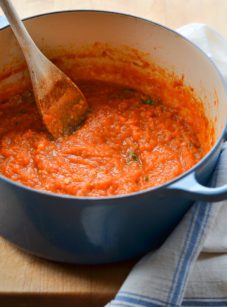
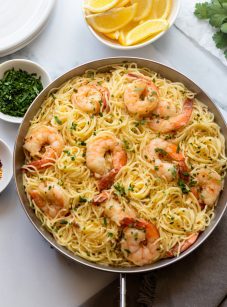
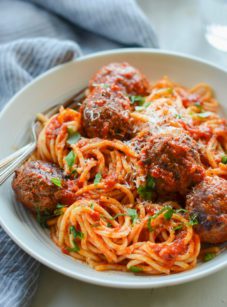
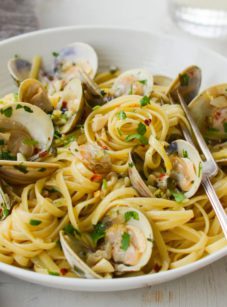
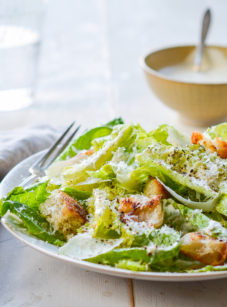
This is simply perfect. A family favorite. (bacon does work if you are out of pancetta)